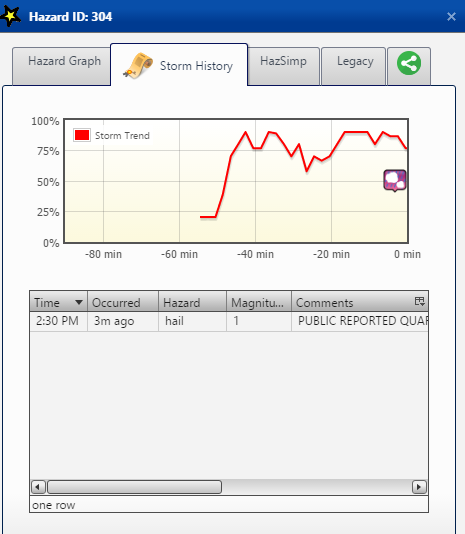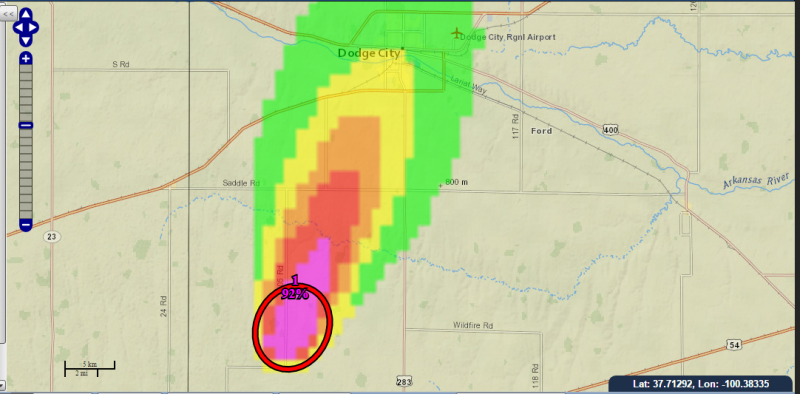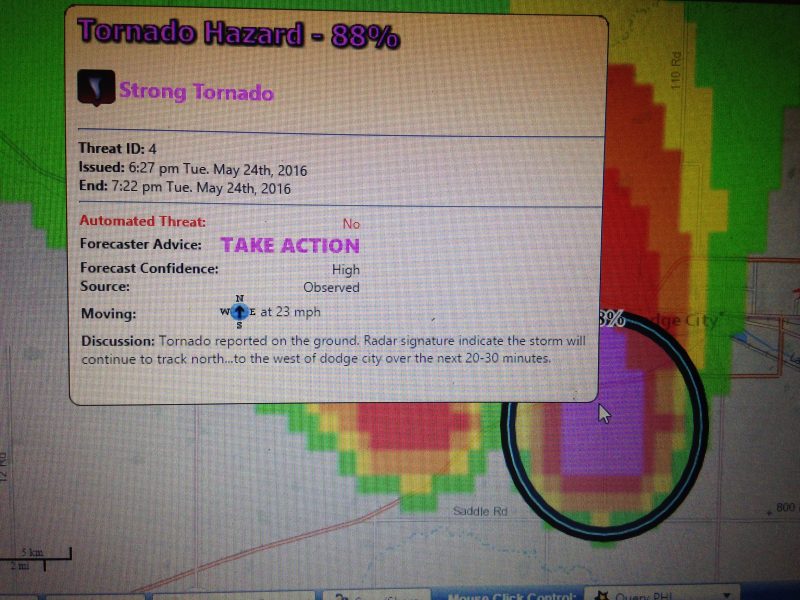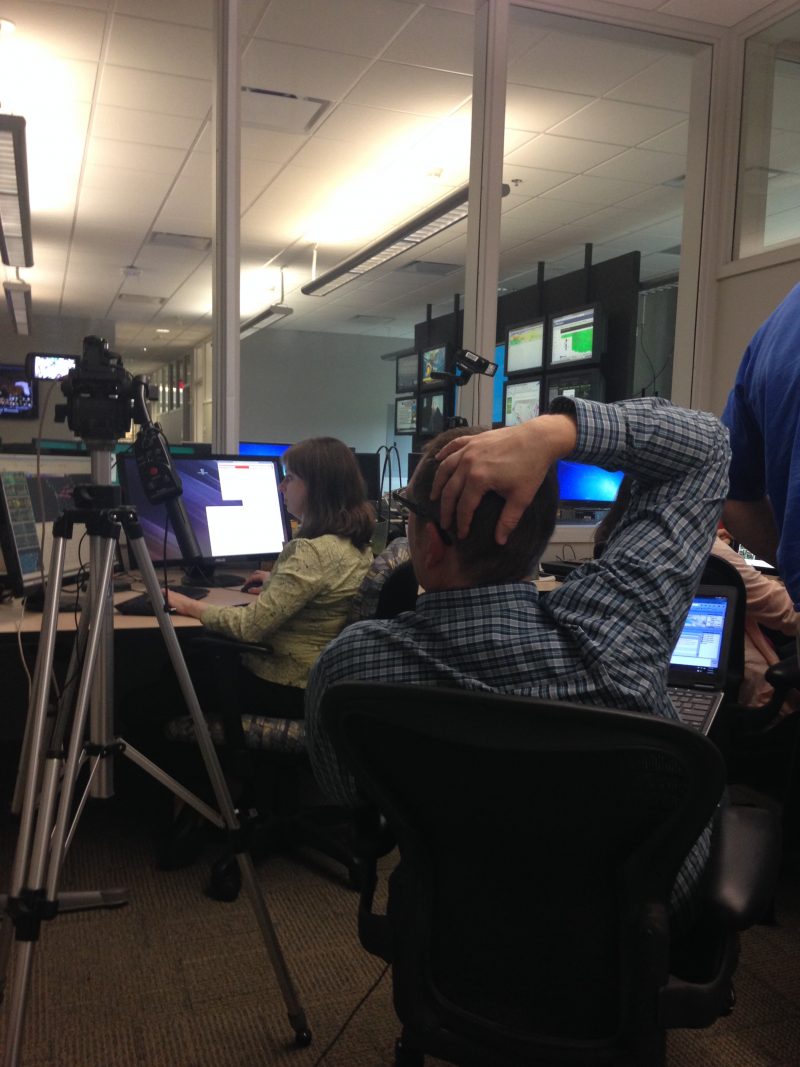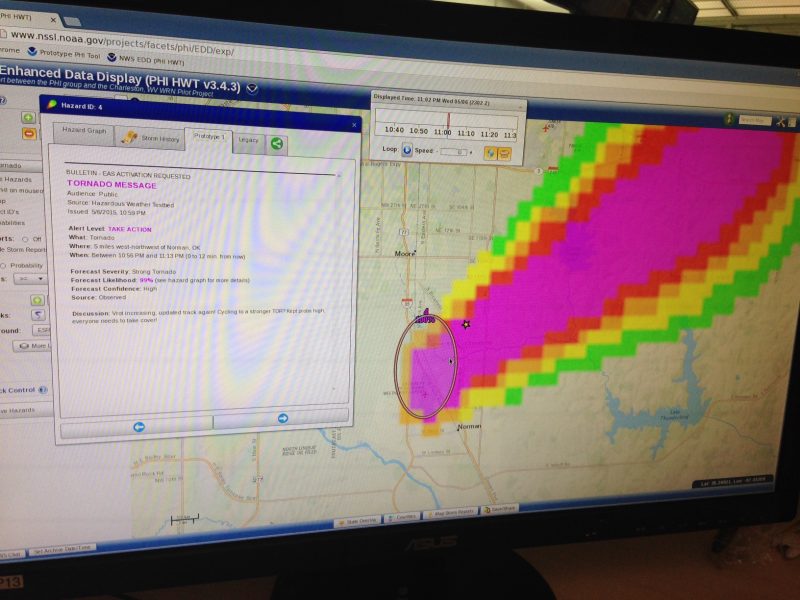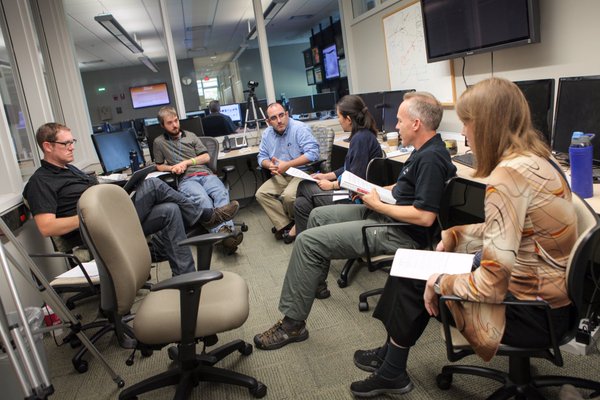For the concept of probabilistic hazard information to be a viable paradigm for providing severe thunderstorm hazard information, it must be able to be robustly produced and utilized for all different modes of storms. In this year’s PHI Prototype experiment, one of the historical cases being “worked” by the participants is a summer pulse severe storm episode from Georgia. Below is an example of radar and corresponding PHI guidance produced by a blend of forecaster and algorithm output toward the end of the event.
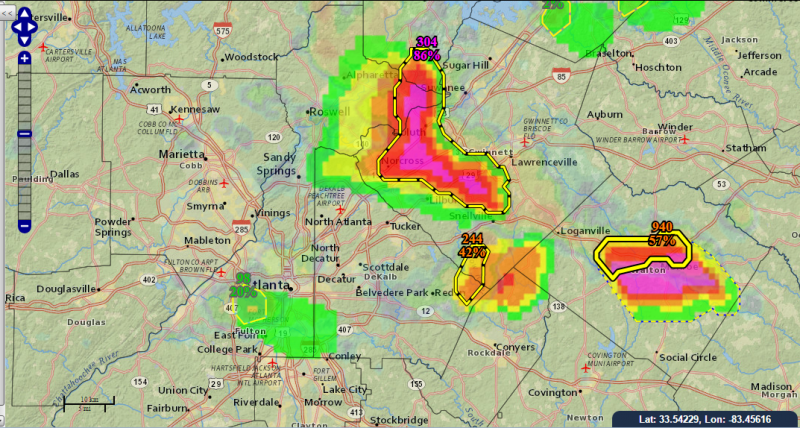
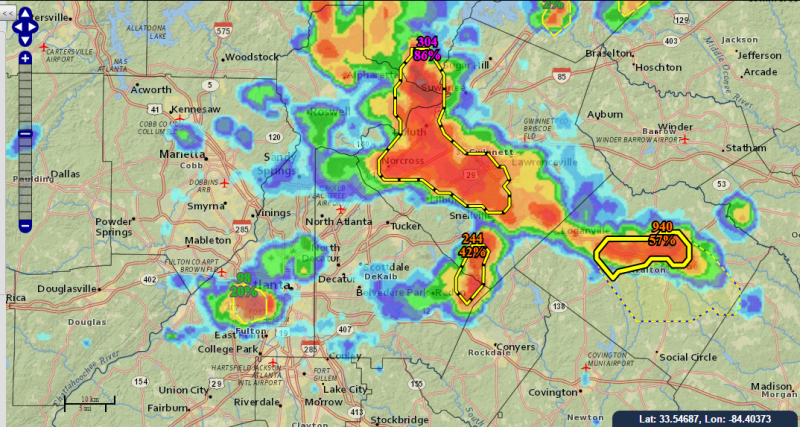
In addition to the forecasters evaluating the benefits and challenges of the PHI system for these type of pulse events, EMs and broadcasters utilized the NWS EDD to display the data and make decisions about summer type related situations. For example, EMs utilized lightning and hail/wind PHI to make decisions about potentially evacuating large outdoor venues and adjusting airport operations. One tool that can be used on the EDD is the ability for the user to display a time series of the PHI probability values for a given storm, along with any reports of severe weather received.
